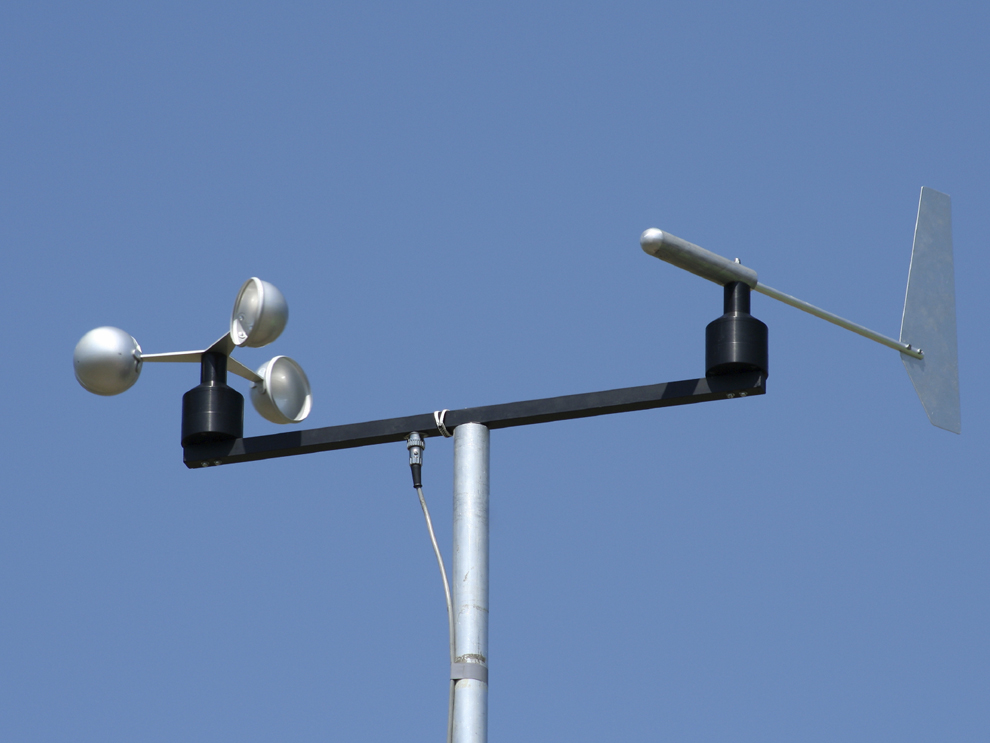Expert Tips for Calibrating Your Anemometer for Optimal Efficiency
Expert Tips for Calibrating Your Anemometer for Optimal Efficiency
Blog Article
All You Need to Learn About Anemometers: Exactly How They Work, Why They Issue, and Where to Utilize Them
Anemometers, though usually forgotten in the realm of clinical instruments, play a crucial duty in various areas, providing useful insights right into wind speed and air movement patterns. Understanding the technicians behind these devices is crucial for any individual looking for to harness the power of this data. From meteorologists tracking climate patterns to designers creating structures with wind tons in mind, the applications of anemometers are diverse and significant. As we explore the ins and outs of anemometer technology, we will reveal the inner functions of these tools, their significance, and the crucial factors to consider when selecting the ideal anemometer for specific applications.

Anemometer Essentials
An essential tool made use of to gauge wind rate and instructions, the anemometer plays an important function in meteorology and various sectors. An anemometer typically contains 3 or 4 mugs that revolve in the wind, a vane that aims right into the wind, and sensing units to track the movements or turnings. By computing the turnings or motions over a certain time period, the anemometer can identify wind speed. The vane aids figure out wind direction by pointing right into the wind, offering valuable information for weather condition forecasting, aeronautics, maritime procedures, environmental surveillance, and wind power applications.
There are numerous kinds of anemometers available, including mug anemometers, vane anemometers, hot-wire anemometers, and sonic anemometers, each with its unique functions and applications. Mug anemometers are generally used for fundamental wind rate dimensions, while vane anemometers are preferred for directional measurements.
Principles of Anemometer Procedure
Structure on the foundational understanding of anemometer basics, the concepts of anemometer operation elucidate the mechanics behind wind rate and direction measurements. Mug anemometers, for instance, have 3 or even more cups that record the wind, creating them to spin faster as the wind rate boosts. Hot-wire anemometers rely on a warmed cable that cools down as wind passes over it, with the rate of cooling down figuring out the wind speed.
Significance of Anemometers
The relevance of anemometers in weather forecasting and various sectors can not be overstated. Anemometers play a vital duty in determining wind speed and instructions, providing essential information for weather projecting, climate research studies, environmental tracking, and aviation procedures. Meteorologists depend on anemometers to collect accurate wind data, aiding them recognize weather condition patterns, forecast tornados, and issue timely warnings to the public. In sectors such as building, farming, sustainable power, and maritime operations, anemometers are utilized to maximize processes, make sure safety and security, and enhance performance. For example, wind ranch drivers use anemometers to examine wind problems and make best use of electrical power manufacturing from wind turbines. In the maritime field, anemometers help ship navigation by offering real-time wind info to captains, assisting them make educated choices to ensure safe voyages. Generally, anemometers are crucial devices that contribute considerably to security, effectiveness, and notified decision-making in weather forecasting and a wide variety of industries.
Applications Across Various Industries
In the sustainable like this power market, anemometers play a critical duty in assessing wind problems for wind ranch positionings, making certain optimum power production. Industries like building and mining utilize anemometers to monitor wind speeds, crucial for safety methods, specifically when functioning at heights or in open-pit mines where strong winds can pose threats. In farming, anemometers help farmers in handling crop splashing by giving real-time information on wind speed to avoid drift.

Selecting the Right Anemometer for Your Requirements
Picking the appropriate anemometer tailored to your particular demands is essential for obtaining why not find out more accurate wind rate and direction dimensions. When picking an anemometer, take into consideration elements such as the intended application, required measurement range, environmental conditions, and desired features. For general purposes, a cup anemometer is suitable for measuring wind speed, while a vane anemometer provides wind direction information. Hot-wire anemometers are perfect for low airspeed measurements, and ultrasonic anemometers offer high precision and durability.

Conclusion
In final thought, anemometers play a critical role in determining wind speed and direction across various markets. It is vital to think about the value of anemometers in order to make informed decisions when selecting the most ideal tool for measuring wind conditions.
There are different kinds of anemometers readily available, including cup anemometers, vane anemometers, hot-wire anemometers, and sonic anemometers, each with its special attributes and applications. Mug anemometers are commonly utilized for fundamental wind rate dimensions, while vane anemometers are favored for directional dimensions. Hot-wire anemometers are ideal for low airspeeds, and sonic anemometers are perfect for high-precision measurements in research study and commercial setups.Structure on the fundamental understanding of anemometer fundamentals, the concepts of anemometer operation illuminate the auto mechanics behind wind rate and instructions dimensions. For basic purposes, a mug anemometer is ideal for gauging wind rate, while a vane anemometer gives wind instructions information.
Report this page